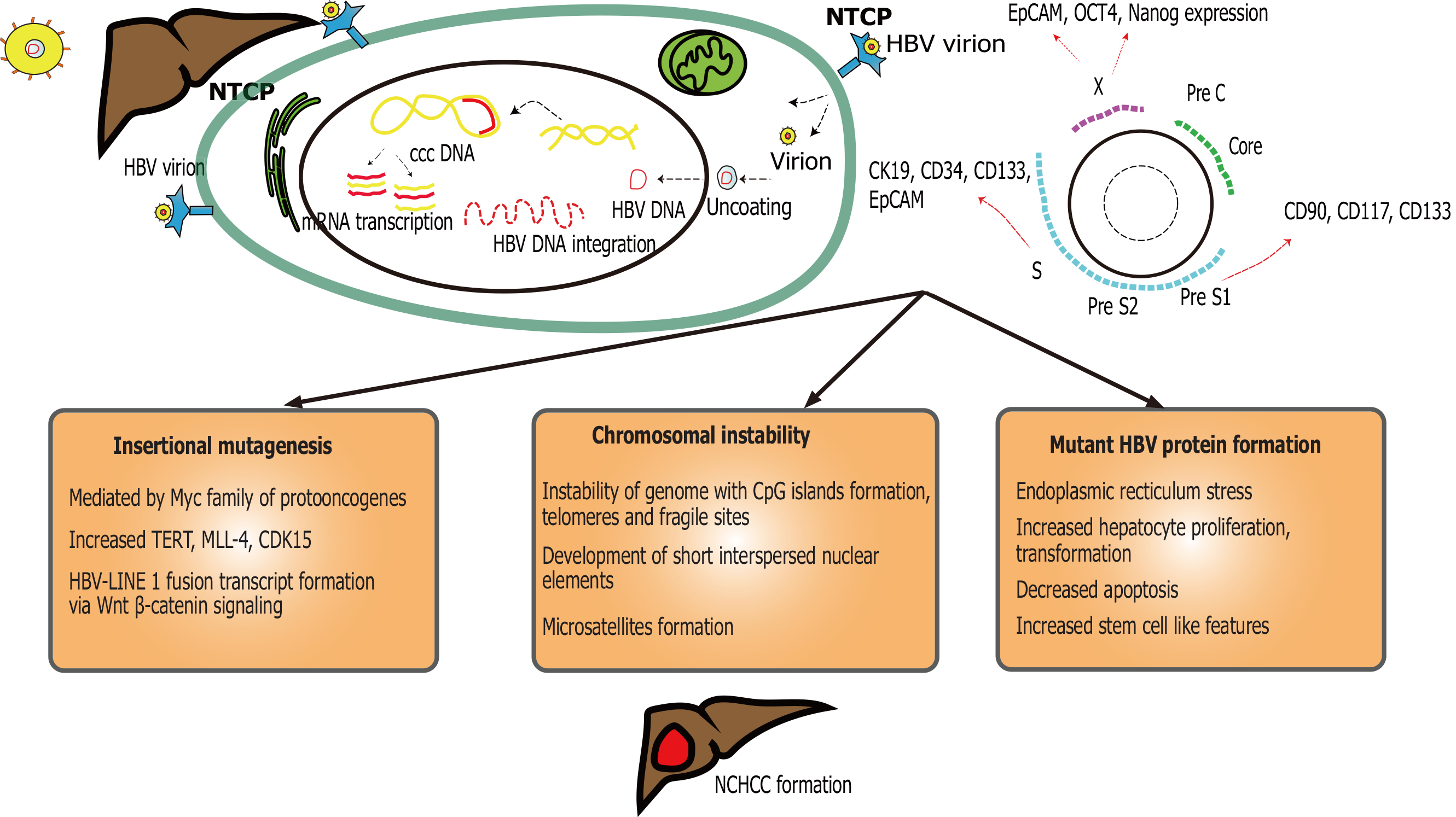Copyright
©The Author(s) 2021.
World J Gastroenterol. Jun 28, 2021; 27(24): 3466-3482
Published online Jun 28, 2021. doi: 10.3748/wjg.v27.i24.3466
Published online Jun 28, 2021. doi: 10.3748/wjg.v27.i24.3466
Figure 1 Mechanisms of oncogenesis in hepatitis B virus induced non-cirrhotic hepatocellular carcinoma.
Entry of hepatitis B virus (HBV) virion into hepatocytes results incorporation of DNA into the host genome resulting in covalently closed circular DNA. Integration of HBV DNA leads to expression of multiple stem cell markers. These markers differ based on the region of the HBV genome (preS1, S, core, X). Three mechanisms of oncogenesis with insertional mutagenesis, chromosomal instability and mutant protein formation shown. HBV: Hepatitis B virus; NTCP: Na+-taurocholate co-transporting polypeptide; cccDNA: Covalently closed circular DNA; EpCAM: Epithelial cell adhesion molecule; OCT4: Octamer-binding transcription factor 4; Nanog: Homeobox protein; CK19: Cytokeratin 19; CD: Cluster of differentiation; TERT: Telomerase reverse transcriptase; MLL4: Myeloid lymphoid leukemia 4; CKD15: Cyclin dependent kinase 15; NCHCC: Noncirrhotic hepatocellular carcinoma.
- Citation: Perisetti A, Goyal H, Yendala R, Thandassery RB, Giorgakis E. Non-cirrhotic hepatocellular carcinoma in chronic viral hepatitis: Current insights and advancements. World J Gastroenterol 2021; 27(24): 3466-3482
- URL: https://www.wjgnet.com/1007-9327/full/v27/i24/3466.htm
- DOI: https://dx.doi.org/10.3748/wjg.v27.i24.3466









